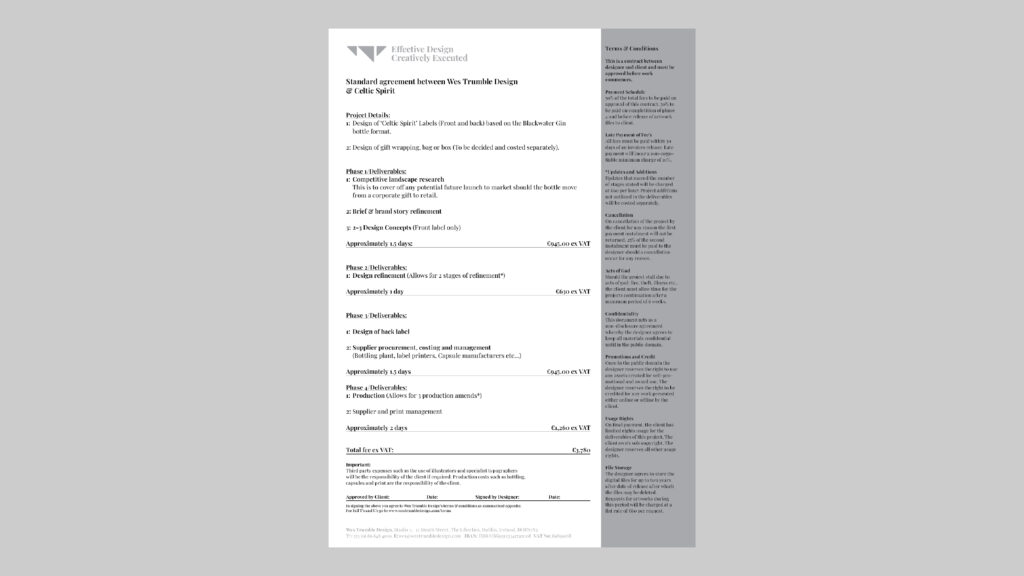Business Models, Studios, Estimating, Invoicing and Budget Management: Test & Rehearse
REFLECTIONS ON LECTURES AND RESOURCE MATERIAL
In this weeks introduction Suzanne breaks down the different avenues designer's take in setting up and evolving their practice whether that be as start up's: I.E: sole traders or global PLC's. The lecture itself delves deeper into the operational and strategic factors involved as well as legal and protection parameters of founding your own business.
Your practice can take one of the following forms:
— Sole Trader
— Partnership
— Collective
— Studio
— Agencies
Some agencies aim for global reach as part of their business model.
Agencies that perform well can also be acquired and become part of larger global sharing networks. The acquirer's are afforded anonymity and profit whereas the agencies acquired can grow their global reach and offer more services due to the network as part of their business model.
Categorising the practices presented/discussed:
— Sole Trader: Theo Inglis
— Collective: Lovers
— Studio: Studio Moross
— Agencies: UsTwo
— Agencies with Global Reach: Super Union, Design Bridge, Ante (Norway), Pentagram
— Aquisitions: Turner Duckworth, William Murray Hamm, Seymour Powell (Acquired by WPP/Loewy)
LECTURE NOTES
In starting your practice it is generally agreed that you should have a least one long-term project running in the background to keep cash flow and the business moving. It is also important to identify your niche so you know which businesses to target and how to present your practice externally to the world.
The business models vary vastly across the examples discussed with some challenges and limitations. For instance working with smaller clients with smaller teams means less stakeholders are involved. This means the work can often flow better but the flip side to this is that it brings in less financial reward. It takes more management and is harder to know where the buck stops the larger the organisation you are dealing with, but is a more financially robust model. Studio Moross won't undertake corporate work but tap into different financial markets in the world such as the US where they can procure a higher return for the work they do.
In managing a projects workflow the issue of costing the project correctly came up a few times to ensure you have a model that builds in enough cash flow for any given month. For the sole trader this is negotiated across set stages of the working process where asking for more time and money becomes an ongoing conversation between you and the client. Aries Moross admits that she has some silly money clients that help float the business while they work on smaller projects, but her turnover of projects in the studio is also high. Lovers use management tools and trackers (some of which have been built by themselves) to track time and costs. As you get to larger agency status such as that of UsTwo, a dedicated accounts team and managers ensure the budgets stay on track. It was also interesting to see that across all levels they have built in multiple revenue streams where the output of the studio is not the sole source of income.
Internally, with the structure of a practice of more than one person, the work is divided based on skillsets and discipline. You may also have a support network in place consisting of an accountant, financial advisor, HR advisor (for writing employee contracts) and agent and a lawyer (for dealing with IP issues).
...
Research and analyse some core operational and functional aspects of design practice and business
As this weeks task is to look at a generic budgeting exercise I read AIGA's book on professional practice in graphic design, chapter 3, which focuses on the "The process of setting fees" (Pages 21-27). The chapter begins by discussing the need to breakdown your business budgeting across three distinct areas:
— The cost of staying in business (Overheads).
— The nature and complexity of a project (Variable Costs).
— The value of the final product (Market Value).
OVERHEADS
To keep on top of the finances you need to have an understanding of the consumption of resources within your practice. These include staff and freelance personnel costs. supplies and materials and those for third parties.
Overheads are constant costs to the business such as:
— Rent
— Utilities (Electricity/Phone)
— Equipment leases/subscriptions: Software/Websites
— Office Supplies
— Business Insurance
— Salaries
— Taxes
— Benefits
‚— Non-Billable Time: Admin/Self Promotion
— Profit (20%)
The annual cost of your overheads helps you to determine what you should be charging for your hourly rate. Your hourly rate should only be visible to you. It is worked out as follows:
Annual Overheads (Incl. Salary and Profit) divided by Billable Hours = Hourly Rate.
...
RECORD SYSTEMS
You need a record system that tracks not only time, but payables and income as well. This will provide you with a percentage figure for your annual billable hours and also give you a percentage figure for the non-billable hours to include in your overheads calculation. Ideally, you should be able to bill for between 50 and 80% of your time. By tracking billable and non-billable hours you are able to calculate how much budget is left on a job and whether the job is profitable or not.
...
TERMS & CONDITIONS
As part of your business model you should also have clear terms and conditions in place which protect you and define clearly what is to be delivered as part of the design process. These should include intellectual property ownership, copyright, payment terms, confidentiality, payment schedule, third parties, etc... A typical payment schedule requires one third of the agreed fee to be paid before work commences, one third at design approval and one third on completion. Changes and additions should also be considered as part of this agreement. Terms and conditions, "the contract" should be agreed by all parties and signed before project commencement.
USAGE RIGHTS
By protecting your work you can potentially create a passive income from the future use of your designs. Usage rights cover elements that can be expanded onto other media such as book covers, posters, product literature, advertising. Usage rights do not cover corporate identities, annual reports or materials with limited time spans. You can in effect limit usage rights to all applications the client requests as part of the project and reserve all other rights.
...
ESTIMATING A PROJECTS COSTS
To estimate for a project you need to gain a thorough understanding of the projects specifications and production process. The project is then broken down into phases. I.E: You might choose to follow the Double Diamond process for this.
Phase 1: Pre-production/Client briefings, competitive research, trends etc...
Phase 2: Concept development.
Phase 3: Design Development/Refinements to concept sketches based on client feedback. Application to the projects main components.
Phase 4: Finished art.
Phase 5: Printing and fabrication.
To cost for each phase you need to define who in your team assigned and what their internal and external hourly rates are. If a designer is also performing a project management role or overseeing production, this should also be included.
Personnel cost per hour + Time Required + 15% (contingency in case anything goes wrong) = Fee
...
MARKET CONDITIONS
AIGA recommends that you think about the market worth of a particular project you are working on: what will be its distribution, exposure and what industry will it serve. At the time of writing I need to read up more on how you quantify this as part of your costing process.
...
NEGOTIATION
— Don't be afraid to ask what a client has budgeted for a project.
— Don't be afraid to walk away if the fee is too small.
— Look for the possibility to expand the project and ask for more.
If you need to renegotiate, identify the areas that you are willing to make a trade on:
— Out of pocket expenses.
— Additional sketches.
— Changes at no extra cost.
— Print supervision at a lower rate.
Know your upper and lower limits. Build a case to support your demands. Be prepared, know what you are talking about and never feel obliged to commit to a number on the spot.
…
Map a resourcing model for budget and staff allocation to deliver a project or creative initiative of your choice.
Taking all the learning of this weeks module (excluding my own research in AIGA) I put together a budget for one of my clients. Originally this did not have any references to terms and conditions, which after researching AIGA's fees information and Shutterstock's 'What to include in your design contract' (Source: https:// www.shutterstock.com/blog/graphic-design-contract). is quite an important part of the overall process and the contract and quotation are one document. It is also been something that I have been thinking about for a while as I have no real protections in place for my own practice. I have therefore combined the quotation document with 'cherrypicked' terms and conditions based on Shutterstock's bare minimum recommendation and re-configured my quote. I was also impressed that Simon Manchipp of Someone has worked hard to have everything on the one sheet of paper and tried to do the same with my layout. It's not the prettiest of documents but it does have all the required information.

…

